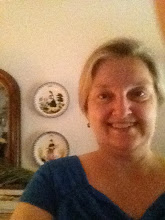
I walked out of the hospital after a busy day. From the hilltop overlooking the Potomac toward Virginia the sky lay like a landscape on the tops of the trees. It was that time of the evening when the light balances the dark. Long past sunset the crescent moon was a solid ball of gray cupped in a hand of bright flesh. It caught me and I stopped to look at it for a moment and take a big breath. The waning of the light and the mystery of the visible/invisible moon made me think of how we were slipping from one life into another.
After having returned home from our long journey, it has taken some time to get used to the now unfamiliar routine of things. Work, home, family, friends, and church, pets, houseplants, mail and dishes were all things we left behind when we went away. Now they are once again a part of our everyday existence. The things closest to our hearts and our everyday life were for a time far away from us. We ventured away from our home, our center, our life, creating a new one as we went. The time and energy we had focused on mundane tasks like opening the mail and washing dishes we spent on new tasks. Daily questions like, "What should we have for dinner?" changed to "What will happen today?" The first question presumed so much - a routine and a familiarity unnoticed until we left it. The answer to, "What will happen today?" depended on the time, the place, and our purpose in being where we were at the time. Dinner in Africa was cooked by the wonderful Matron Nancy and was brought to us, a surprise every day much like the rest of our visit there. Returning to England from the raw newness of Ghana, we were grateful when our friends fed us because it felt like Thanksgiving dinner every time - familiar, comfortable, and delicious. We rented a flat for some periods and so the dinner question like the place we stayed became familiar, the only new thing was locating the local grocery store. For the rest of the trip, we ate by a combination of necessity, chance and planning, following tips from waiters, fellow travelers, hotel owners and guide books with the inevitable failures and occasional memorable successes.
Daily life was dictated by our ever-changing circumstances. The heat or the cold, the room three stories up or the one on the ground floor, a place with a kitchen or a place with no refrigerator, a car or no car - all of these strongly influenced what we did and how we did it. It changed our life of habit to a life of infinite variety that demanded constant attention and adaptation. In the end we longed for sameness and habit, returning to the same Kofte shop in Istanbul 3 times just because it was familiar. The waiters knew us and laughed when they saw us coming, ushering us to a white marble table where we ordered the same simple thing every time - Kofte, white bean salad, and Ayran, a drink like buttermilk.
Doing things differently every day for 4+ months shed new light on the life we had left behind. We began to wonder, "Why, in fact, do we do things the same way every day, anyway?" Coming back, I am afraid I will forget important things and not act on perceptions that we had. I worry that the lessons we learned on sabbatical will be overshadowed by the demands of the life to which we return. Then I realize we can't un-see things truly seen or un-learn them if we truly learned them. We did not really leave a life behind but took our life with us in a new direction. And even if memories fade, like the moon at the balance of day and night, there will be times in the lulls between things when we can remember clearly. And then there are all the pictures....












